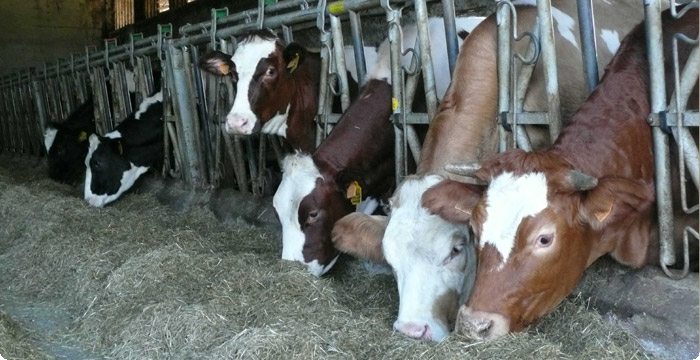CELLINA DRY GRASSLANDS SCI - THREATS
These grasslands prevalently pioneer, like all primitive and undeveloped habitats, represent an ecosystem rather precarious and with low resilience, that is with scarce ability to react to external interference. Once destroyed or tampered, the spontaneous reconstitution of plant associations can take several decades before its return to the original state.
Among the main factors of negative pressure these are the most important.
- The impact of intensive agricolture highly specialized with major investments immediately behind and inside the SCI, especially on S.Foca land consolidation is a possible threat to the protection of habitats and species. The main risks are related to the transformation of the last residual meadows within the agroecosystem, to the use of phytopharmaca and pesticides, particularly in the areas allocated for the production of rooted cuttings (San Giorgio della Richinvelda district) and the possible risk of sewage spillage coming from bovine and porks breeding on the riverbeds and meadows.
- The practice of intensive pasture or, on the contrary, its total abandonment are generating problems diametrically opposite. On one hand, if the grazing is done in the wrong periods, the risk of destruction and interference of nestingduring periods of reproduction of several species protected by the "Birds Directive" increase exponentially. Similarly, an excessive load of cattle grazing determines an alteration of grasslands habitats for excessive trampling and manures. On the other hand, on areas protected by the banks, the total abandonment of grazing together with the lack of meadows rejuvenation actions made by floods accelerate the afforestation processes. In addition, the increasing presence of shrubs is also favored by the missed timber harvesting and by the mowing of the meadows that in ancient times was done on these territories. To overcome these problems, the pasture was regulated by the Regional Law n.17/2006 and the matter was also addressed as part of the participation process for the preparation of the management plan of the SPA "Magredi of Pordenone" (grazing planproposal).
- The hydraulic interventions for the flood control and the exploitation of water resources for agriculture, industry or hydro-potable purposes are another element of pressure. A particularly negative impact at the expense of the riverbed pioneer vegetation and of the primitive grasslands of Community interest is generated by periodic gravel removals. The presence of river barrages, embankments and canalizations is gradually changing the original river dynamics of the river that is the main natural renewal engine of grasslands habitats.
- The presence of large Military propertyareas, if on one side has allowed to maintain grasslands environments steming the simplification induced by the expansion of agricultural industrial and urban areas, on the other side is a factor of negative pressure, especially where heavy-armoured vehicles training activities are still on going.
- Last mention for the pressure exerted by recreational activities and sports, especially those that determine the presence of roaming dogs, excessive hunting interference, low-height flights of pleasure aircrafts or model aircrafts, motor vehicles accessesand off-road vehiclessports activities. The latter, as for a part of other activities, are however prohibited and regulated by Regional Laws n.17/2006 and n.7/2008.







